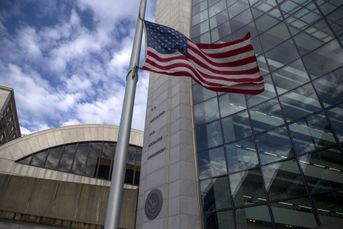Why financial advisers still hate reverse mortgages
While a lifesaver for some clients, they remain a high-fee trap for many.
A reverse mortgage is a little like a car airbag. It’s nice to know it’s there. But if it ever has to be used, the driver’s already in trouble.
New regulations are supposed to improve the unsavory reputation of reverse mortgages, which are loans against a home that don’t need to be repaid until the borrower moves. “It used to be the Wild West out there, without much regulation and enormous fees,” says financial planner Warren Ward.
While stronger oversight is helping to end past abuses, the number of people taking out reverse mortgages is shrinking. The pace is down 24 percent from last year, government data show, and less than half its peak in 2009. One reason: Many advisers say the loans remain a last resort and can handcuff homeowners who have better options.
In theory, reverse mortgages can make sense. The median U.S. couple age 65 to 74 has more equity in their home than in financial assets — $150,000 versus 125,000, according to the Boston College Center for Retirement Research (CRR). A reverse mortgage turns that home equity into spending money. It can help someone delay taking Social Security so they can lock in a higher benefit. It can cover unexpected expenses and help investors ride out bear markets.
A reverse mortgage worked for Art Lundgren’s mother. Widowed at age 50, she never had a chance to save much for retirement. To lower expenses, she moved from the four-bedroom home where she raised three kids to a two-bedroom house. She loved the garden and the neighbors and never wanted to move again.
Social Security covered most of her expenses, but the reverse mortgage paid the property taxes and for major dental work. Then, when she got lung cancer, the money went to round-the-clock hospice care. She died at home at age 67.
It was the right decision for his mother, says Lundgren. But as a financial planner at Lake Country Financial Planning outside Minneapolis, he considers himself lucky that he’s never had to put a client in a reverse mortgage.
Too often, reverse mortgages put people in irreversible situations. Michael Smith’s grandmother-in-law is finding homeownership a burden. But, with much of her home equity tapped by a reverse mortgage, selling the home will no longer get her the cash needed to move to a smaller place or an assisted-living home. “She’s kind of trapped,” says Smith, president of STA Wealth Management in Houston.
Regulations have even raised some costs. The owner of a $250,000 home might pay total fees of $8,250, the CRR estimates. A home equity loan is much cheaper and less complicated, says Steve Medland of TABR Capital Management in Orange County, California. And, as credit conditions have improved since 2009, banks are more willing to make these loans.
An even better option: tapping home equity by selling the house and moving somewhere cheaper. And the younger people are when they move from an unaffordable house, the more they’ll save.
Learn more about reprints and licensing for this article.








